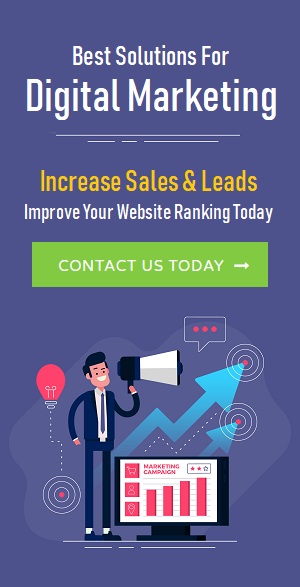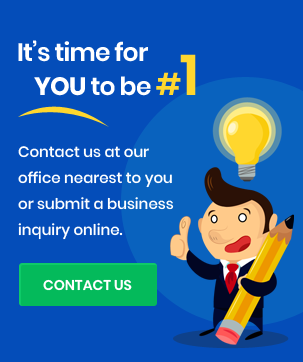Considering how much time, money and strategic effort we’ll assume you have put into your brilliant website and understanding your customers, you’ll probably want a way to quantify and prove its success to yourself and potential clients or investors, right? After all, you’ve worked hard to avoid the 38 percent of people who leave a website if the content or layout is deemed to be “unattractive.”
Key performance indicators (KPIs) are the best way to present tangible proof that the investments in your site are paying off. They are objective metrics that not only show your success thus far, can help set the benchmark on ensuring you continue on an upward trajectory.
But which KPIs should be used to measure the success of your SEO and digital marketing strategies? The following nine KPIs should be the first nine on your list.
KPI 1: Bounce rate
• The first crucial metric is your bounce rate, the percentage of sessions which see a user loading a page and exiting without doing anything else. The rate itself is calculated by dividing the non-interactive sessions by the total number of sessions.
• Most sites will see their rate sitting around the 40 to 60 percent range, but this varies based on the business requirements and content of the pages/site.
• The reason why this KPI is so vital is not only how engaging your content is, but the requirements of search engine algorithms which determine whether or not your site is providing value to those searching for its content. For example, if a user is searching a keyword that you are optimised for, but your bounce rate is too high, Google will assume that the information you offer is irrelevant and knock you down in the rankings.
KPI 2: Pages per session
1. The number of pages a user visits per single session is another important KPI to keep an eye on. This will often also include the repeated views of a single page.
2. The best numbers depend on how large your site is, for example, a two-page website with two pages per session is excellent.
3. If this figure is low, you may need to re-evaluate your call-to-action or how easy it is to find other products and services from each page on your website.
KPI 3: Organic sessions
– If you want to know how well your current search engine ranking is serving you, then organic sessions is the KPI for you. This metric will tell you how many visitors you receive from the various search engines.
– It is important to note in this metric however that a single user can cause multiple sessions.
– The reason why this is such a crucial metric is because your SEO efforts are all about growing these numbers. Keywords and their positions, quality of content and optimization, this metric explains the success of these. On-page and off-page optimizations should improve rankings increasing your click-through-rate (CTR), and all of this depends on compelling, relevant page titles and meta descriptions with a great call-to-action.
KPI 4: Keyword ranking increases
• Keyword rankings determine the effectiveness of the keywords you are using, and obviously, the higher, the better.
• This metric is particularly useful for targeted long-tail keywords, and ranking improvements are crucial as they lead to more traffic, leads, and sales.
• Keep in mind that these rankings will move quite a bit due to algorithm updates and should be checked weekly (if not daily), to ensure there are no drastic drops (don’t stress about small decreases). An excellent way to improve keyword rankings is on-page and off-page optimization.
KPI: 5 Average session duration
– The average length that a single visit to your website lasts for is an excellent figure to know and will increase with the size of your site and content (hopefully).
– This KPI is in direct correlation with the quality of your site content because users who are spending a lot of time and exploring the various pages are obviously getting value from what you offer.
– Once again the use of clear and engaging CTAs will directly affect this and determine your chances of new leads or conversions.
KPI 6: Page load time
• Page load time is both an important metric by itself, plus a determining factor for a lot of the other metrics in this list. Long load times are a really bad thing across the board; they affect not only the user experience but also your rankings.
• Slow loading sites will not encourage people to delve further into your content or visit other pages, decreasing the likelihood of conversions.
• Users will abandon a page if it takes more than three seconds to load, longer than this will certainly increase your bounce rate with a 90 percent bounce expected on pages that take longer the five seconds to load.
• This is why the design of your site needs to consider load times. Optimize images, content, and code to streamline as much as possible and speed up your site.
KPI 7: Crawl errors
– It is vital that crawlers see and access all of your site content so they can determine the value. Crawl errors mean that they cannot access your site or content.
– If you do find these errors, it is most likely due to a server error, request timeouts on the DNS server cause these issue and worst case scenario, your site is down. If you have a broken or incorrect URL level, this will cause crawl errors which have nothing to do with your actual website.
It would be best if you kept an eye on this KPI because a spike in crawl errors requires immediate action.
KPI 8: Leads and conversions
• You’ll want to know how successful your site and content is at generating leads that will convert into sales. Any contact with a potential customer is a lead, from a contact form submission to a webinar signup.
• You’ll also want to keep an eye on things like if you have a higher conversion rate on mobile vs. desktop, the demographics of interested parties and which of your pages drive the most leads.
• Drill down even more with goal funnels to find the weaker points of your customer journey. Increasing leads relates to every core business objective of gaining more business and increased sales.
KPI 9: Top exit pages
– The last page a user visits before terminating their session is known as the exit page, and you will want to make sure this is a thank you page or confirmation page, to ensure the customer journey, and experience has been completed correctly.
– If the top exit page is on pages that should be leading to other pages, this is something you’ll want to work on changing. Most measurements will provide the raw number of exits as well as the exit rate percentage which is calculated by dividing exits with page views per page.
The nine KPIs
Your goal should be an increase in these KPIs and your business every month. Customer growth, increased profit and ROI can be measured via Google Analytics and various other programs to expand your strengths and fix the issues on your website to ensure it is performing to its maximum capability and proving itself as a great asset to your business.
Call us at +91-9205356986 or mail us at info@linkbuildingcorp.com
Never miss a story..!!
Grab the Latest link building, seo, content News, Tips, Updates & Trends..!!
Want to share your thoughts with our readers? Learn how to become a contributing author


